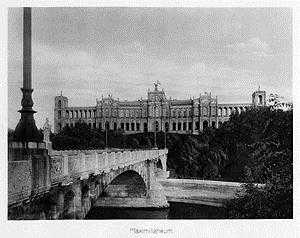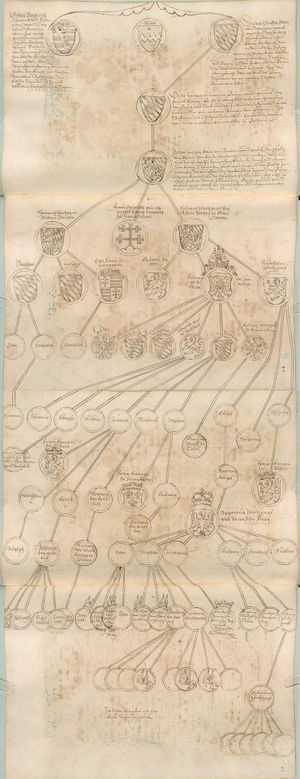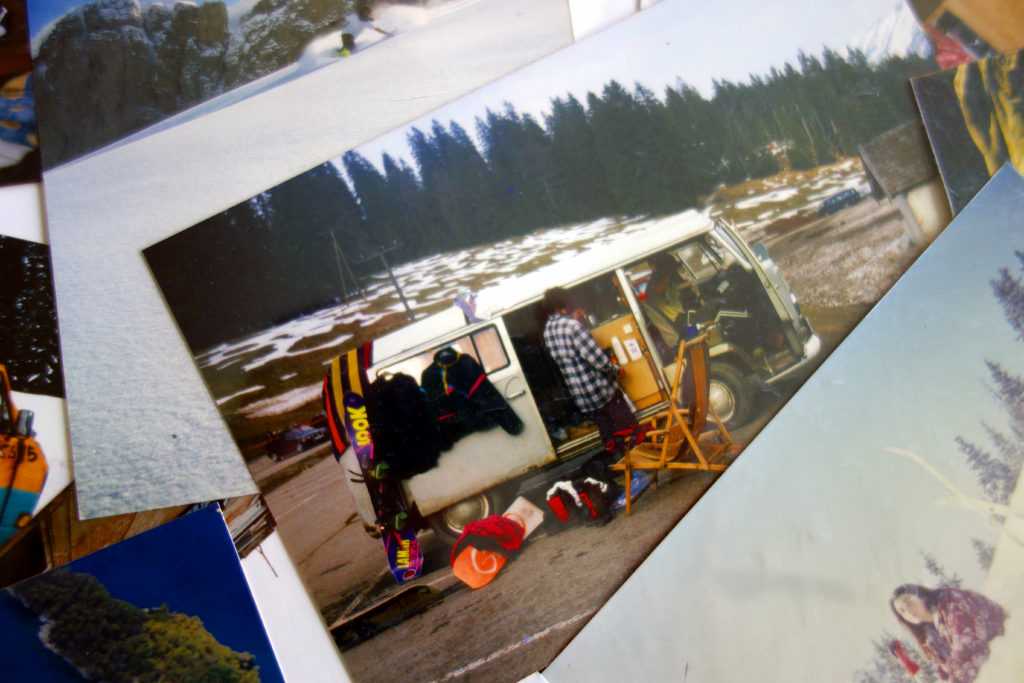Franconian dialects


Under Franconian dialects, the research understands a number of German dialects, which are located in the Main Rhine area. They belong to the Low, Middle and Upper German language area. The Franconian governmental districts largely comprise the East Franconian dialect area, which is attributed to the Upper German. Only in western Lower Franconia (Aschaffenburg area) one speaks Rheinfränkisch (Central German). In the rest of Lower Franconia dominated the Lower Franconian, in Central and Upper Franconia, the Upper Franconian. Compared to the Bavarian language area, there is a wide mixing zone in the Nuremberg area.
Table of Contents
"Frankish" as a landscape and language name
In the north of the Free State of Bavaria, a group of dialects is widespread, popularly as a whole "Frankish" referred to as. In the vernacular of dialectologists is for these dialects traditionally called "East Frankish" used. The discrepancy in the naming has historical causes. The modern, popular term "Frankish" refers to the current political-administrative division of Bavaria. The administrative districts carry since 1837 the names of "strains": Bavaria, Swabia, Franconia. Under "Frankish" Therefore, the dialects Upper, Middle and Lower Franconia are understood, which differ conspicuously from the Old Bavarian and the Swabian.
That dialects are also spoken outside of Bavaria, which are genetically related to the Franconian dialects of northern Bavaria, has largely disappeared from the consciousness of the population. In northern Baden-Württemberg, the local dialects are still considered "Frankish" or "Hohenlohisch dialect-Fränkisch" designated. The Hohenlohischen areas belonged to the area of the historical Franconia, which found its firm form in the Franconian imperial circle of the early modern times. Therefore, there is the name "Franconia" still in use for the area in question.
Linguistics broadens the field of Franconian dialects even further. It assigns the Hessian and the Rheinpfälzische to the "Rhine Franconian" to; The dialects of the Rhineland south of Dusseldorf are called "Central Franconian dialects" or "Mosel Franconian" designated. Under "low Franconian" the dialects of the northern Rhineland, the western Netherlands and northern Belgium are summarized.
Classification of the German and Franconian language areas
The area outlined above "Frankish" Thus, dialects cover much of the western German and Dutch language areas. The naming and demarcation goes back to the language historian Wilhelm Braune (1850-1926), who used them for those historical German writing dialects that can not be described as Lower Saxon, Alemannic or Bavarian. As a linguistic criterion for the demarcation against the Alemannic he cited the ending of the 3rd person plural. It is in the Alemannic -et, z. B. she says, in Franconian but -e (n), z. B. say (n). In this respect, however, Franconian and Bavarian resemble each other, so that another criterion is used to delineate these two dialects, namely the personal pronoun of the second-person plural in nominative and accusative. The forms in the Franconian language are you and yours, in the Bavarian language you eat and enk.
The traditional division of German dialects in reference to the historical duchies (concept of the "tribal dialects") has been modified since the end of the 19th century, in part also crossed by a rather internal language-oriented structure. This is based on a dichotomy in Low and High German, where the High German is again divided into Central and Upper German. This division is based on the more or less existing in the dialects of the historical sound appearance of "High German sound shift". This process took place in the 5th to 6th century and concerned the pronunciation of the Germanic lute k, t and p. Words that contain these sounds are z. Eg English "make", "tide" and "pound". They are in standard German "do", "Time" and "lb", in the Low German but "maken", "Tid" and "Pund".
The vernaculars of Westphalia, Lower Saxony, Schleswig-Holstein, Mecklenburg-Western Pomerania and Brandenburg are counted among the Low or Low German dialects. They border on the "Benrather line", named after the Düsseldorf suburb of Benrath, to the group of Central German dialects. These only partially show the Hochdeutsche Lautverschiebung. That’s the way it is "do" and "Time" High German in Frankfurt "make" and "Time", "lb", "Apple" and "beat" but "Pund", "Appel" and "kloppe". The Germanic p is thus not affected in Hessen by the Hochdeutschen Lautverschiebung, but is still pronounced as in the other Germanic languages.
The dialects Ostfränkisch, Schwäbisch and Bairisch belong to the Upper German. Here the Hochdeutsche Lautverschiebung is completed. For this reason, the German standard language is also called "high German" designated. The name has nothing to do with it "standing tall" in the social sense, but with the fact that the standard language rather resembles the High German than the Low German dialects.
The area of the entire Franconian dialect group is distributed across all three German language landscapes. Niederfränkisch belongs to the Low German, middle and Rheinfränkisch belong to the Central German and East Franconian belongs to the Upper German.
Franconian dialects in Bavaria
In today’s Bavaria, the Middle German Rheinfränkisch and Upper German East Franconian occur. Rheinfränkisch is only in western Lower Franconia, in the area between Miltenberg and Alzenau, as well as in the Rhön spread. The local dialects are more similar to the Hessian Frankfurt than the Lower East Frankish Würzburg. The crest of the Spessart, where once the border of the territories of the Archbishopric of Mainz against the prince bishopric of Würzburg, also forms the border between the Rhenish Franconian and the East Frankish dialect. It is defined by the "Appel / apple"-Line that separates the Central German from the Upper German. Numerous other differences between the two dialects border directly on each other here. The borderlines form "bunch", which leads to a particularly clear difference between western and eastern dialects. This is the mhd. Diphthong ei in the words "dress" and "wide" in the west [a:] "Klaad", "Braat", in the east [ε:] "Klääd", "bräät". The infinitive of the verbs has the ending -e in the west: "aisch wants schloofe", in the East it is endless: "i want schloof".
Lower East Frankish
The characteristics of the Lower East Franconian, which distinguish this from the Franconian Franconian, are usually also those that are common to the Lower East Franconian and the southern Thuringian. There seemed to be a time when people in Lower Franconia had more contacts to Thuringia than to the Rhine-Main area. Historians and linguists sought this phase in the time when there was still a Duchy of Thuringia independent of the Frankish Empire, which extended south to the Maindreieck. But this epoch – ended by the defeat of the Thuringians in the year 531 – is too early. Most of the specific Lower Franconian-Thuringian language features emerged later. Today one thinks therefore more of the time of the Thuringian duchy in the 7th century. During this time linguistic innovations of the same kind spread over both Lower Franconia and Thuringia. In the 9th to 12th centuries, however, developed Thuringian and Lower Franconian apart. While in the Lower Franconian the mhd. Monophthong ô is spoken as [oa]: "Broat", "Stroa" ("loaf", "straw"), he reads in the Thuringian [u:]: "Bruut", "Struu". Only in the far north of Lower Franconia in the area of Mellrichstadt resemble the as "Hennebergisch" designated dialects in this respect the Thuringian. South of it joins a territorial strip in which a "Compromise" both sounds are common. Here are the sample words "Bruat" and "Strua".
Upper East Frankish
The dialects of most of Upper Franconia (except Coburg) and the West of Middle Franconia are referred to as Upper East Frankish. This dialect group was created as part of the First Land Development by immigration of settlers from the northern Upper Rhine area in the previously or not populated by Slavs areas around Rednitz and Obermain. This is proved by West German-German language features on a phonetic level, which are widespread in the entire territory of the Upper East Frankish, but also in Hesse and in the Rheinpfalz, but not in Lower Franconia. This includes the monophthongation of mhd. To dialectically [a:]: "GLAAD", "braad" For "dress", "wide". But the word geography shows connections of the Upper East Franconian to the southwest, bypassing Lower Franconia. Such are the words "plumbers" ("plumber") or "Mockelein" ("calf") Although in northern Baden-Württemberg and in Central and Upper Franconia, but not spread in Lower Franconia. The north of Upper-East Franconia is characterized by some Thuringian features that are missing further south, such. For example, the above-mentioned elevation of mhd. Ô too mundlich [u:].
South East Frankish
This as well "Hohenlohisch dialect" designated dialect group has greater similarities with the Upper East Frankish than with the Lower Franconian on. It is therefore not always classified as a third subdialect of the East Franconian, but only as a variety of Upper East Frankish. As in the (remaining) Upper East Franconian mhd. Is here as mundlichlich represented [a:] (Glaad, braat). The infinitive, in contrast to Lower East Frankish, has an ending (i want schloofe). The main criterion for demarcation against the northeastern Upper Franconian is the pronunciation of final -en. In South-East Franconian the vowel is preserved and the -n disappears (i want schloofe); in the northeastern Upper East Franconian, the vowel disappears, while the nasal remains intact (i want schloofm). The boundary thus defined runs exactly on the crest of the Frankenhöhe east of Feuchtwangen and Rothenburg.
Transitions between Upper East Franconian and Northern Bavarian
South of the Fichtelgebirge ("Sechsämterland") and especially in the area east and south of Nuremberg, the Upper-East Franconian gradually in the northern Bavarian, the dialect of the Upper Palatinate, over. The transition is very pronounced in the Fichtelgebirge, while in Mittelfranken, in the area around Weissenburg and Gunzenhausen it is gradual and extended over larger areas. Here East-Frankish, Bavarian and also Alemannic characteristics overlap in such a way that every linguistic "demarcation" very difficult and must appear arbitrary. The map shows the northern and eastern boundaries of the "Weissenburger Raums" mowing, sawing, turning and sewing in the words according to the utterance of mhd. They are in the Upper-Franconian meea, seea, dreea and neea, in the northern Bavarian maan, saan, draan and naan.
The Nuremberg area is particularly well researched (see Steger 1968, pp. 543-572). Here is true, as in the Upper East Frankish "GLAAD" ("dress") and "braad" ("wide"), but also, as in the northern Bavarian, "Schou" ("shoe"), "grouß" ("large") and "Drout" ("wire"). The mhd vowels uo, ô and â are represented here as rising diphthongs. The dialect mixture originated in the high Middle Ages, when the originally to the Bavarian Nordgau belonging, very sparsely populated area was colonized by the Staufer in the course of the Reichslandpolitik. Settlers from western Middle Franconia met a Bavarian-speaking indigenous population here. In contact between both groups, the mixed mouth of the Nuremberg area was created. In the territory of the imperial city of Nuremberg (corresponding approximately to today’s district of Nürnberger Land), the boundaries of individual Bavarian language features shifted further and further to the east in the course of the early modern period. This process is currently still ongoing.
Summary
The historical name "Frankish" was and is applied to a group of German dialects that are common in the West of the German-speaking area. These dialects mediate between the extremes of Low German, Alemannic and Bavarian, and more or less fluent in the borderlines. There are no linguistic features that exist throughout and only in the area of "Frankish" spread and that with it "typical" for the Franconian are. The Franconian has characteristics that it has in common with individual of the neighboring dialects, so that not always the same linguistic criteria can be used for the delimitation.
The German dialects form a continuum. While the fringes are very different, the middle of everything is a bit different. Thus, the question may be "What is Franconian??" only by the negative definition "What is not Bavarian, Alemannic, Upper or Lower Saxon" get answered.
Related Posts
-

German academy – historical lexicon of Bavaria
German Academy The Academy for Scientific Research and Care of German Studies / German Academy was founded on May 5, 1925 in Munich. Initially focused on…
-

Mittler isar ag – historical lexicon of bavaria
Mittlerer Isar AG Since the beginning of the 20th century, plans for the use of Bavaria’s rich water resources to generate electricity on a large scale…
-

Haus bavaria – historical lexicon bavaria
House Bavaria Emerging term in the late Middle Ages, which also includes the geographical area of the state of Bavaria, as well as the ruling dynasty…
-

Practical comparison of camping buses – camping bus comparison
Practical comparison of camping buses We love camping buses and have since our driver’s license, so more than 20 years , almost continuously owned a…
